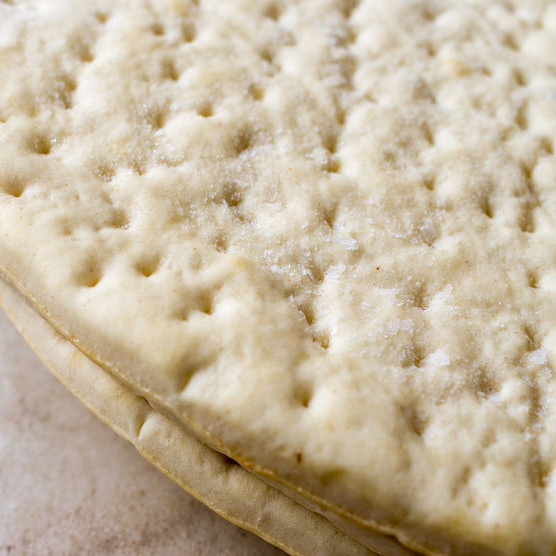
Carrageenan Gum
What is Carrageenan Gum?
Carrageenan gum is a naturally-occurred family of marine polysaccharide obtained from seaweed. They are considered water-soluble dietary fibers.
Carrageenans are an excellent alternative to animal-based thickeners such as gelatin. They are used in foods such as baked goods, frozen dough, ice cream, yogurt, cheese or soy milk to:
- Thicken
- Emulsify
- Preserve
- kappa-carrageenans
- iota-carrageenans
- lambda-carrageenans
Origin
The major source of carrageenan gum is red seaweed (also called Irish moss) or algae. Typical characteristics of carrageenans are:
- kappa: forms strong, rigid gels in the presence of potassium ions. It reacts with dairy proteins, and is mainly sourced from Eucheuma cottonii.
- iota: forms soft gels in the presence of calcium ions. It is produced mainly from Eucheuma spinosum.
- lambda: does not gel, and is used to thicken dairy products. The most common source is Gigartina from South America.
Function
One of the most beneficial properties of carrageenan gum, especially the kappa- form and its ability to form gels. Typically, it’s at 1.0 to 1.5% concentrations. This unique property is dependent on temperature, concentration and ionic strength.
Other properties include:2
| Property | kappa-carrageenan | iota-carrageenan | lambda-carrageenan |
| Solubility at 176 °F (80 °C) | Yes | Yes | Yes |
| Solubility at 68 °F (20 °C) | Na+ salt soluble
K+, Ca2+ and NH4+ -salt swell |
Na+ salt soluble
Ca2+ -salt swell |
Yes |
| Gels (heat at 175 °F/79 °C and cooled to <125 °F/51 °C | Strong with K+ ions | Strong with Ca2+ ions | No |
| Gel texture | Brittle | Elastic | No gel |
| Syneresis | Yes | No | No |
| Acid stable gels | pH >3.8 | pH >3.8 | — |
Commercial production1
The following steps are used in producing carrageenan gum:
- Seaweed harvesting
- Cleaning and washing
- Extraction with alkali
- Filtration and concentration
- Processing with potassium chloride
- Gel pressing, drying, milling and blending
- Refined carrageenan can be obtained using the same processing steps except for the use of alcohol instead of potassium chloride.
Nutrition
As a dietary fiber, carrageenans are most beneficial for their role in viscosity-mediated gastrointestinal effects and their involvement in cholesterol reduction. The viscous behavior of carrageenans can also help with slowing enzymatic diffusion and activity and reduced nutrient absorption.
Application
Carrageenan gum is usually used for bread improvers for frozen dough. It helps:3,4
- Dough stability during proofing
- Texture improver
- Reduce viscosity during cooling
- Reduce firmness
- Increase specific volume
- Improve the moisture content
Carrageenan gum helps to improve the specific volume of bread due to its interactions with glutens. In frozen dough, carrageenan gum helps to form gels. The addition of carrageenan gum will lower lightness color values of bread. Carrageenan gums is usually added from 0.01-0.1% in bakery products.5
In icing or sauces, carrageenan gum is usually applied at low levels such as 0.25% or even lower.
FDA regulation
Carrageenan as a food additive for direct addition to food for humans is regulated by FDA under 21CFR172.620.6
References
- Kariduraganavar, M. Y., Kittur, A. A., & Kamble, R. R. (Eds). Polymer synthesis and processing: Natural and Synthetic Biomedical Polymers, 2014. Kumbar, S. G., Laurencin, C. T., and Deng, M. Elsevier. Pp:1-31.
- Marine Colloids ™ Carrageenans, FMC bulletin.
- Hydrocolloids. http://www.classofoods.com/page1_9.html. Last accessed by JAN 16. 2020.
- Kohajdová, Z., Karovičová, J., and Schmidt, Š. Significance of emulsifiers and hydrocolloids in bakery industry. Acta Chimica Slovaca, 2(2009): 46-61.
- Turabi, E., Sumnu, G., and Sahin, S. (2008). Rheological properties and quality of rice cakes formulated with different gums and an emulsifier blend. Food hydrocolloids, 22(2008): 305-312.
- CFR – Code of Federal Regulations 21CFR172.620. Accessdata. Fda. gov. April 01. 2019. https://www.accessdata.fda.gov/scripts/cdrh/cfdocs/cfcfr/CFRSearch.cfm?fr=172.620. Last accessed by Jan 16. 2020.

